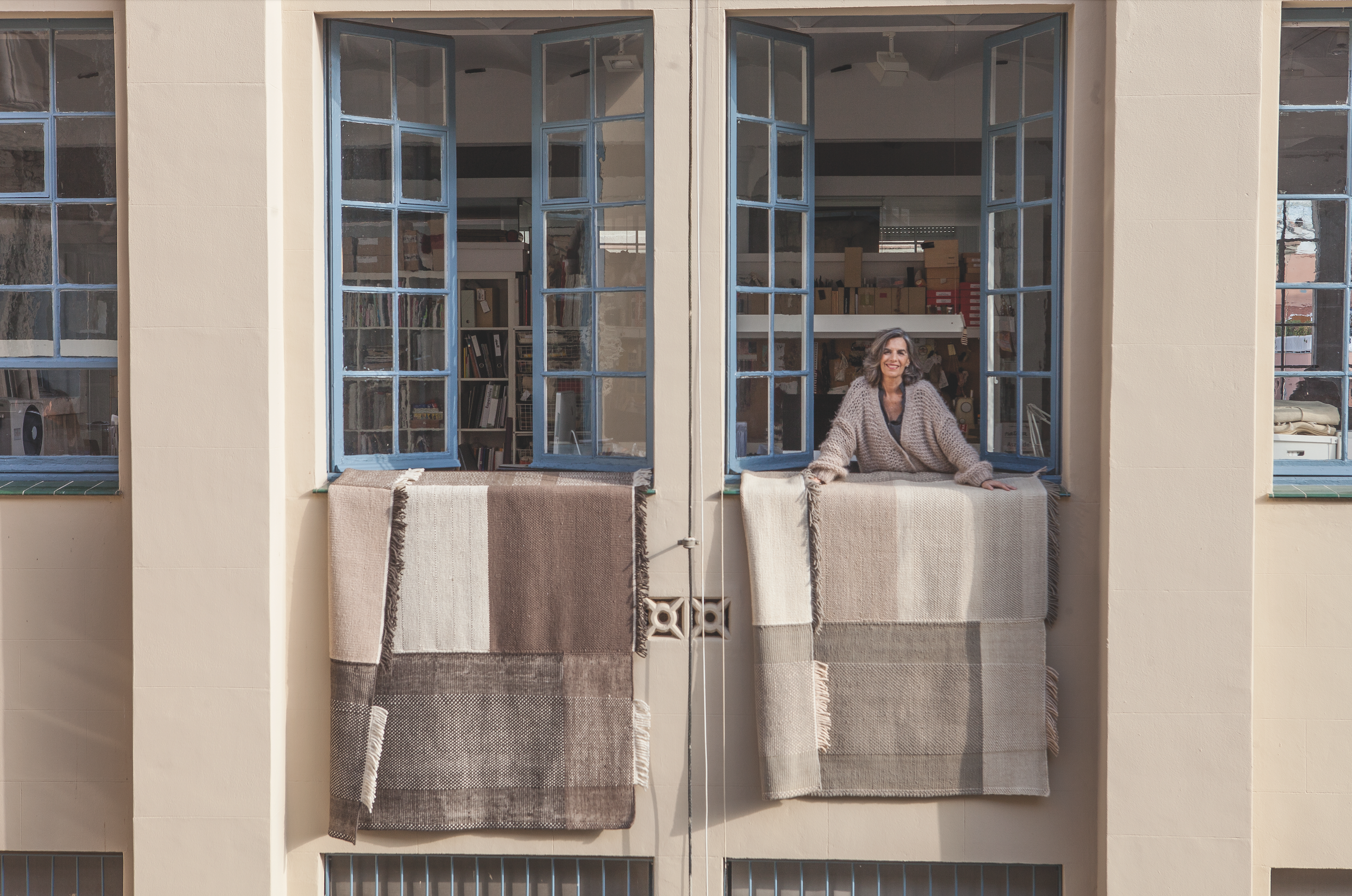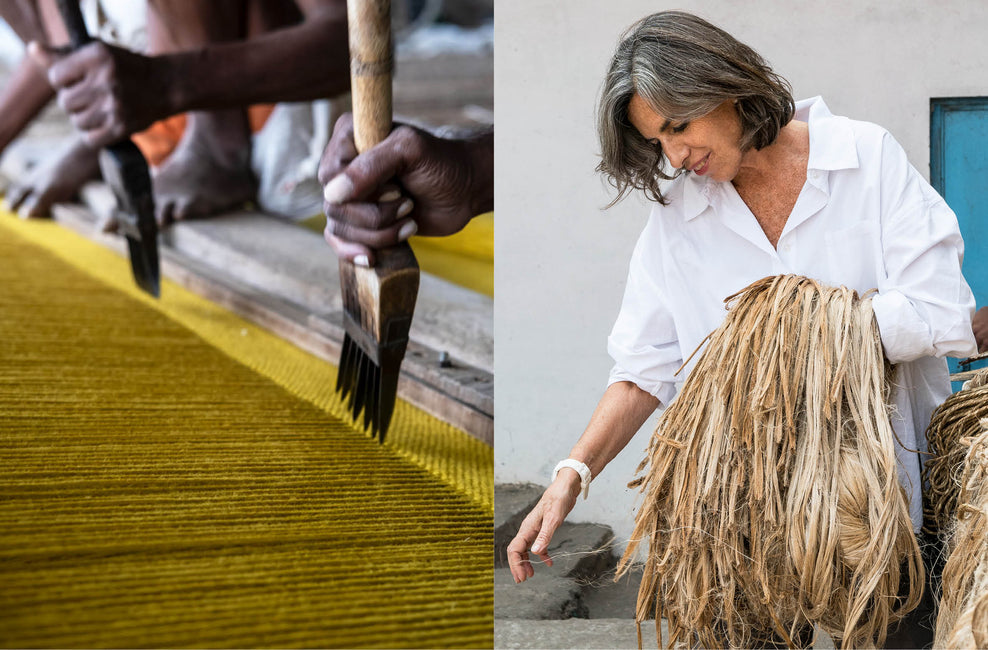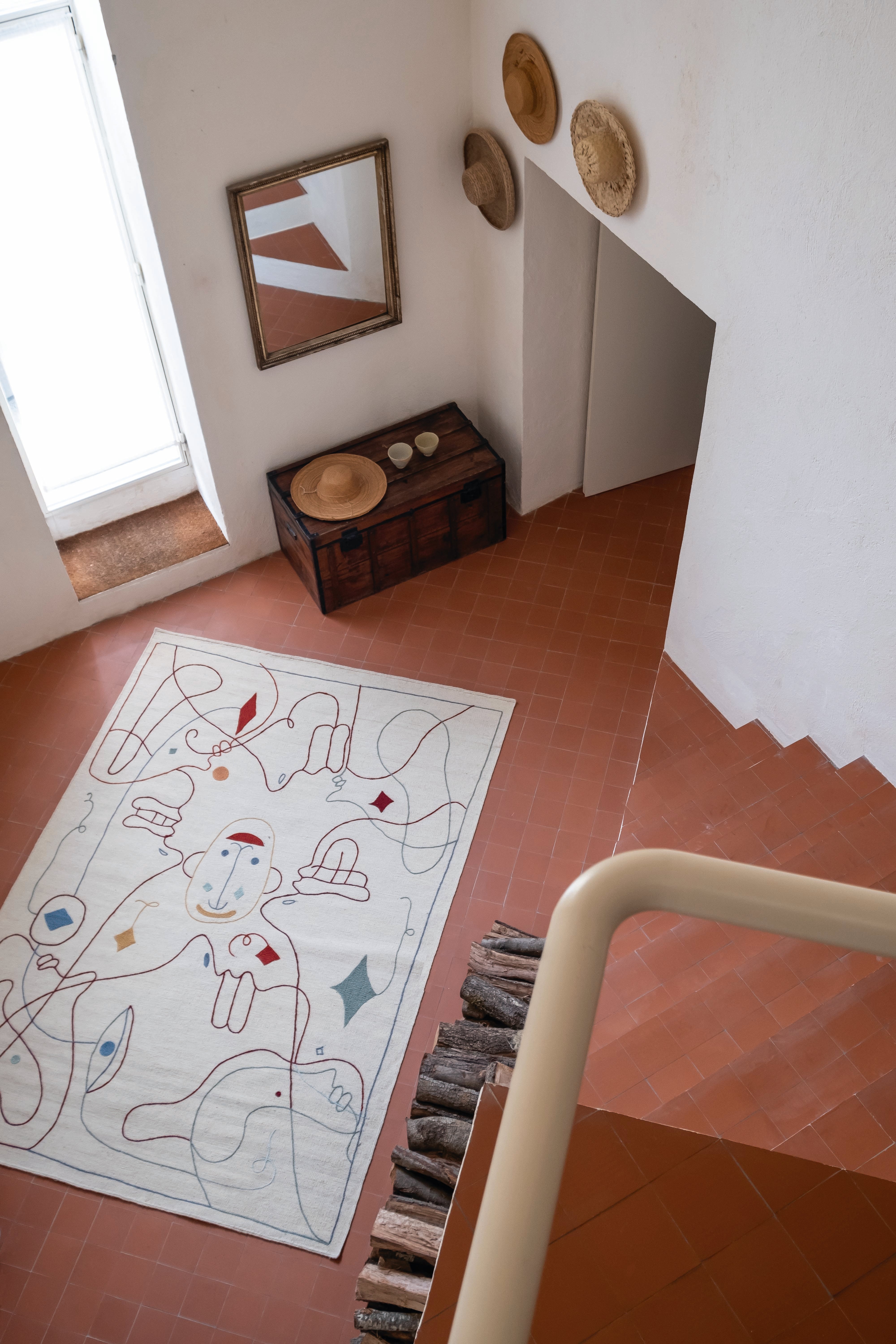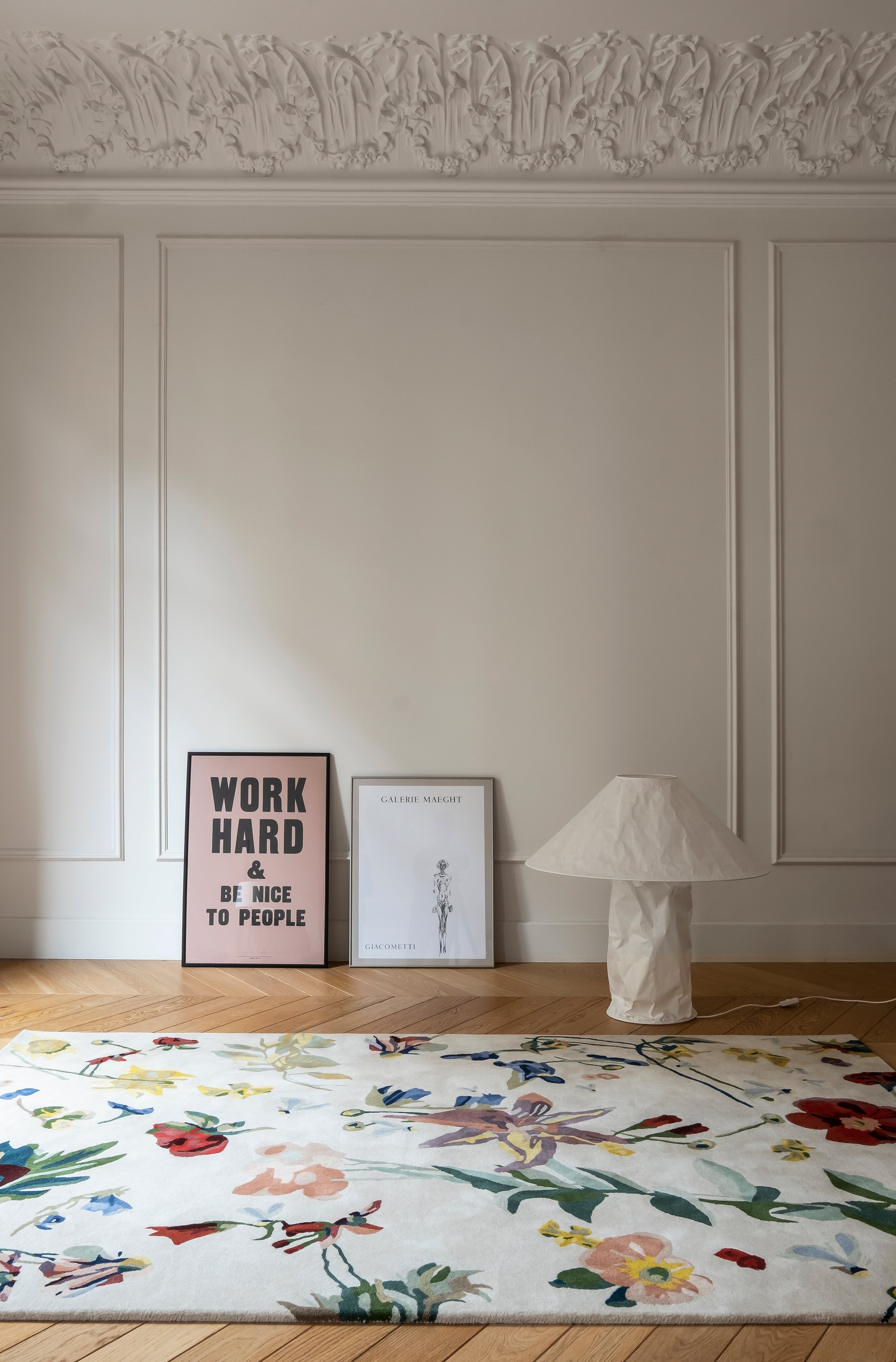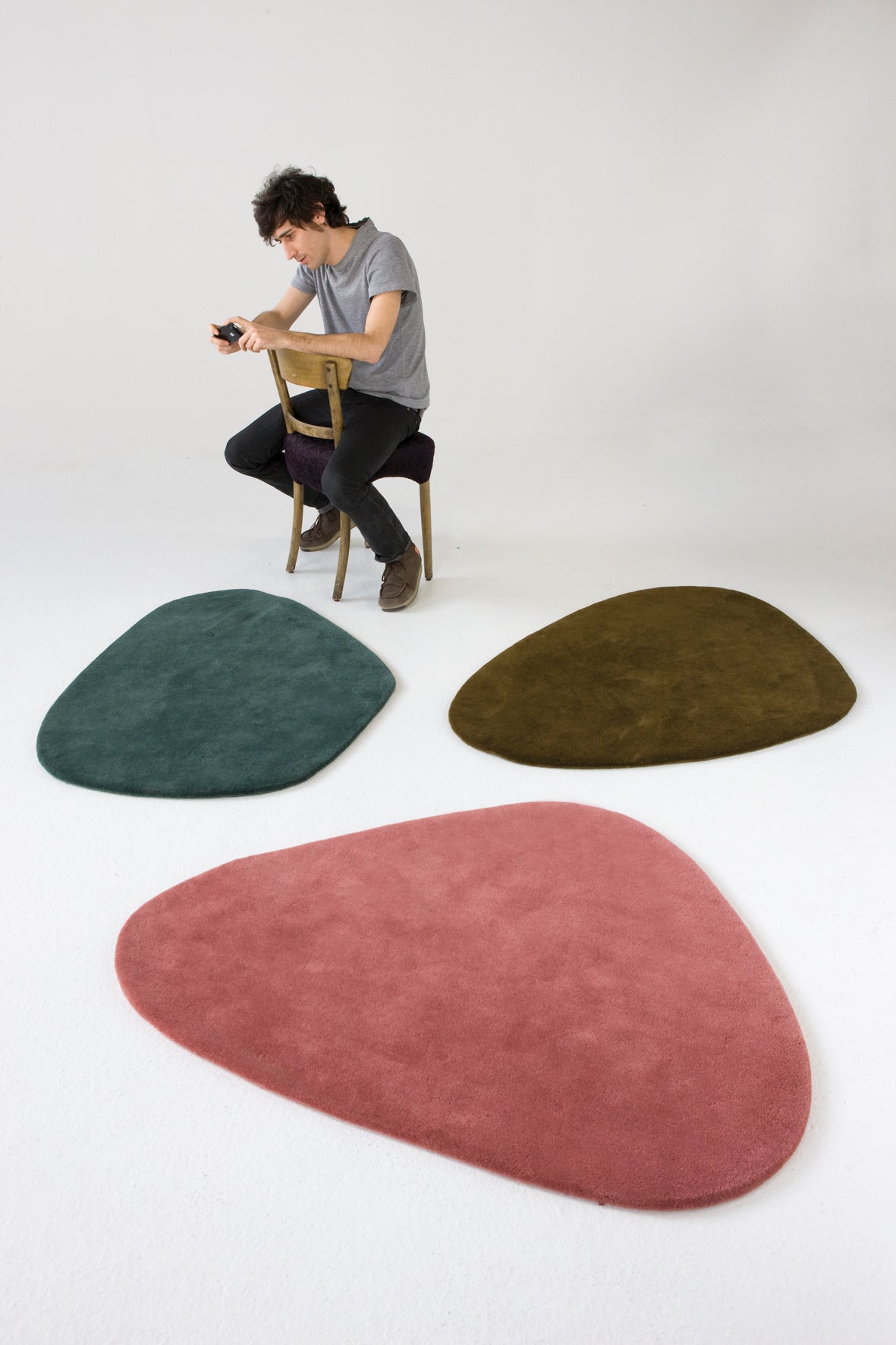Nanimarquina rugs preserve and embody a thousand-year-old cultural legacy. They tell the stories of their weavers and pass on the traditions taught from one generation to another.
Techniques
The creation of handmade rugs requires great skill and knowledge of the different traditional techniques of each place.
Let's unravel the intricacies of each technique, exploring their histories, intricacies, and the distinctive characteristics they impart to the rugs they produce.
Hand Knotted Technique
Made manually on a vertical loom where the thread is strongly attached to the warp by means of knots, this traditional technique, typical of India, Iran, Pakistan, Tibet, Turkey and all the countries of the Caucasus, is characterised by being a slow process (since it is manually knotted one by one, row by row), which allows the creation of highly detailed designs. The greater the number of knots, the greater the density, the definition of the pattern, the durability and, consequently, the value of the rug.
The shape and thickness of the knot differentiate the different kinds of hand-knotted rugs. From Turkish knot, Persian knot, Indo Nepal to Sumak.

Oblique
Hand knotted | Persian knot + Sumak

Rabari
Hand knotted | Indo Nepal + Sumak

Chillida Figura Humana 1948 Rug
Hand knotted

Earth
Hand knotted
Hand Loomed Technique
Made on a vertical or horizontal loom where the weft threads are intertwined with those fixed to the warp loom, this traditional technique allows for a wide range of finishes, from simple and fine designs, with cut or looped pile, to more elaborate textures. It is used to create dhurries and kilims.
One of the main differences between kilim weaving and flat weaving is that the weft in the case of kilim is much tighter and more dense.

Haze
Hand loomed | Dhurrie

Losanges
Hand loomed | Kilim

Tres
Hand loomed | Dhurrie
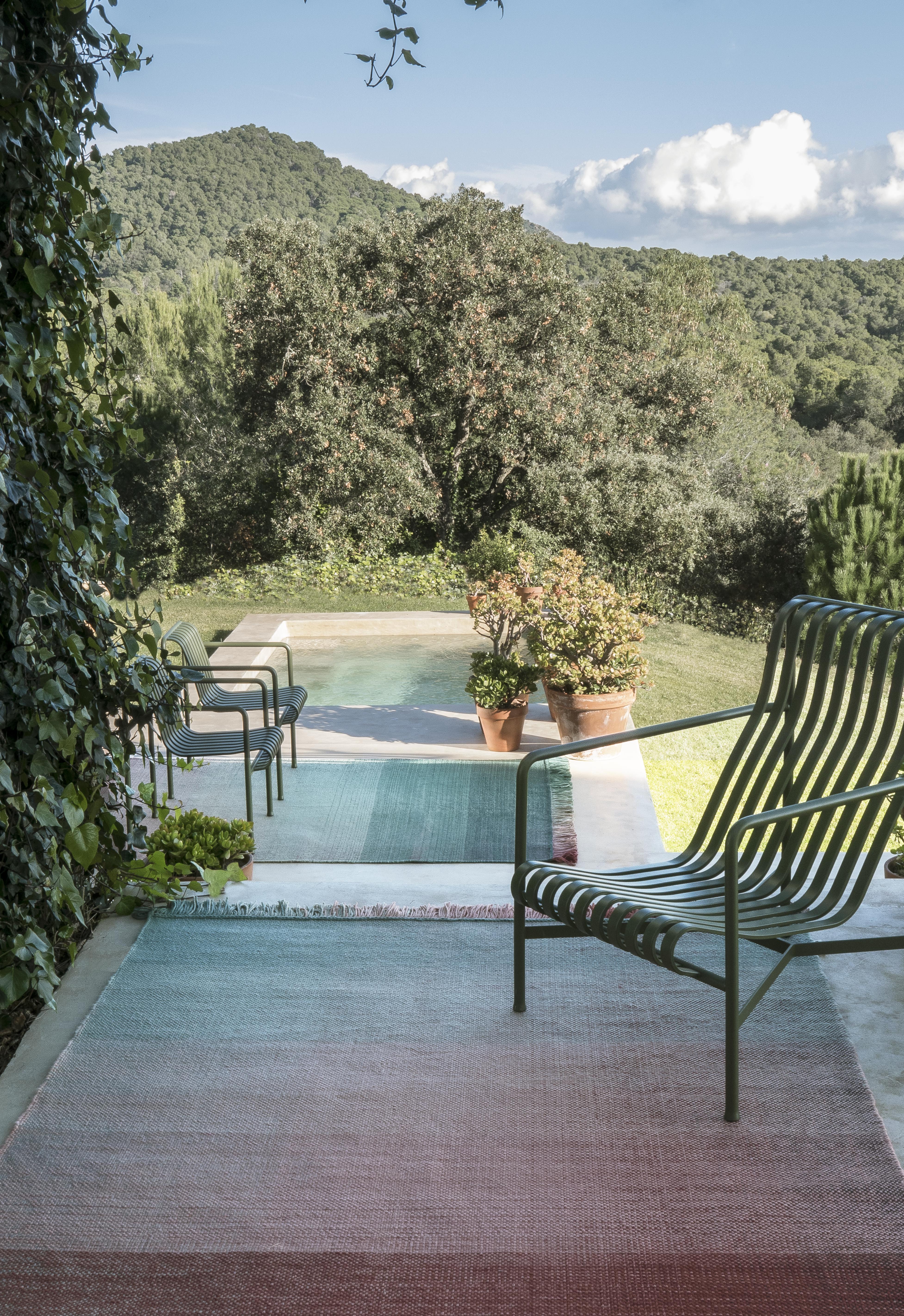
Shade Outdoor
Hand loomed | Dhurrie
Hand Tufted Technique
Originally from India, this technique allows you to create rugs in different formats, with a multitude of drawings and pile heights. It is manipulated with a gun-like tool with which the threads are injected onto a fabric previously stretched on a frame. Through this technique, curves and fluid lines can be woven, which allows drawings and graphic designs to be literally transferred.
In addition, tufted rugs are characterised by providing natural thermal insulation thanks to the amount of air that is retained in the interstices of their fibres; and also acoustic, these absorb sounds reducing noise levels.
Fibres
Nanimarquina uses a diverse spectrum of fibres in their rugs, spanning across various origins and compositions. From the luxurious softness of animal fibers to the eco-friendly allure of vegetable fibres, and from the resilient versatility of synthetic fibres to the cutting-edge advancements in artificial fibres, let's explore the characteristics, benefits, and unique qualities that each type brings to the art of rug weaving.
Wool
Animal origin

Prized for its softness, warmth and natural strength, sheep's wool has been used in many ways for thousands of years. Its unique natural properties make it water repellent and fire retardant.
Nanimarquina uses different wools depending on the desired finish: Wool, New Zealand wool, New wool, Afghan wool, Mohair wool, Recycled wool and Felt.
Silk
Animal origin
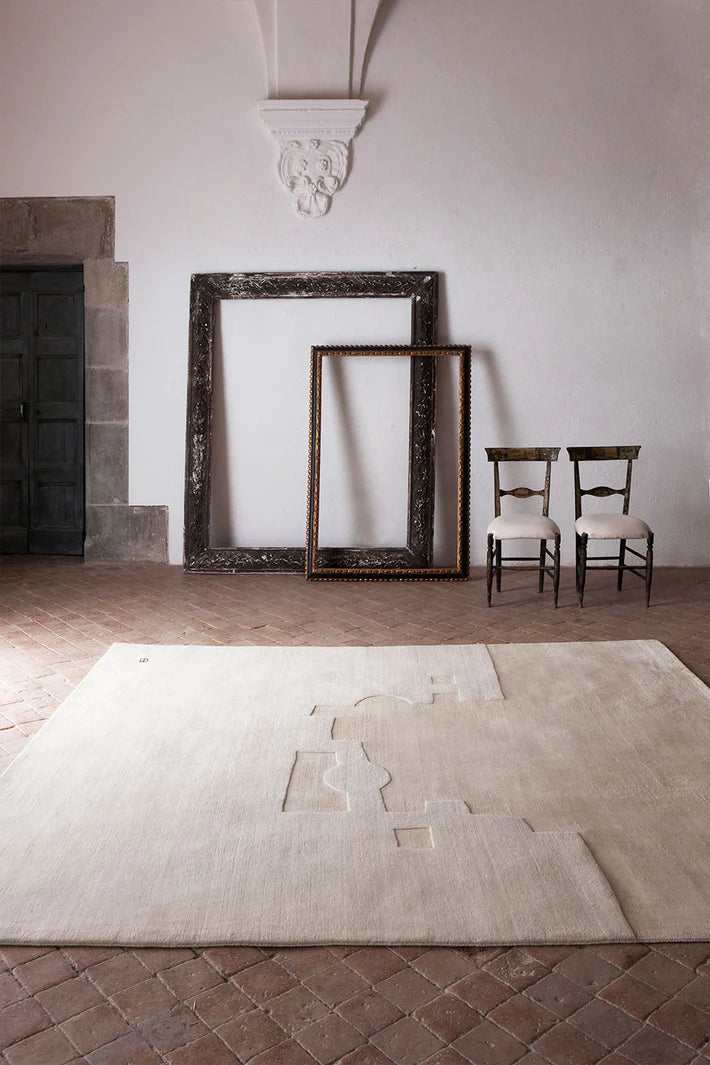
Silk provides exceptional softness and a luxurious shine. The spectacular shine comes from the prismatic structure of the surface of each fibre, and is unique to silk.
In addition to reflecting light, this gloss amplifies colors to jewel-like intensity. In addition, silk is tremendously resistant, although it is more delicate to maintain.
Jute
Vegetable origin

Jute is a 100% natural, ecological, biodegradable and recyclable fibre, so it is recommended to use it exclusively indoors.
Its artisan aesthetic brings a fresh air to the space, especially in spring and summer, and insulates from the cold for the autumn and winter season. A perfect fibre for the whole year. These natural fibres resist the passage of time, without the need for maintenance.
Nettle
Vegetable origin

Mainly grown in the Himalayas, China, India and Burma, nettle fibre is highly prized for its softness, strength and its resemblance to vegetable silk.
The process of transforming the grass into yarn involves a complex cooking of the fibre mixed with ashes and water.
Cotton
Vegetable origin
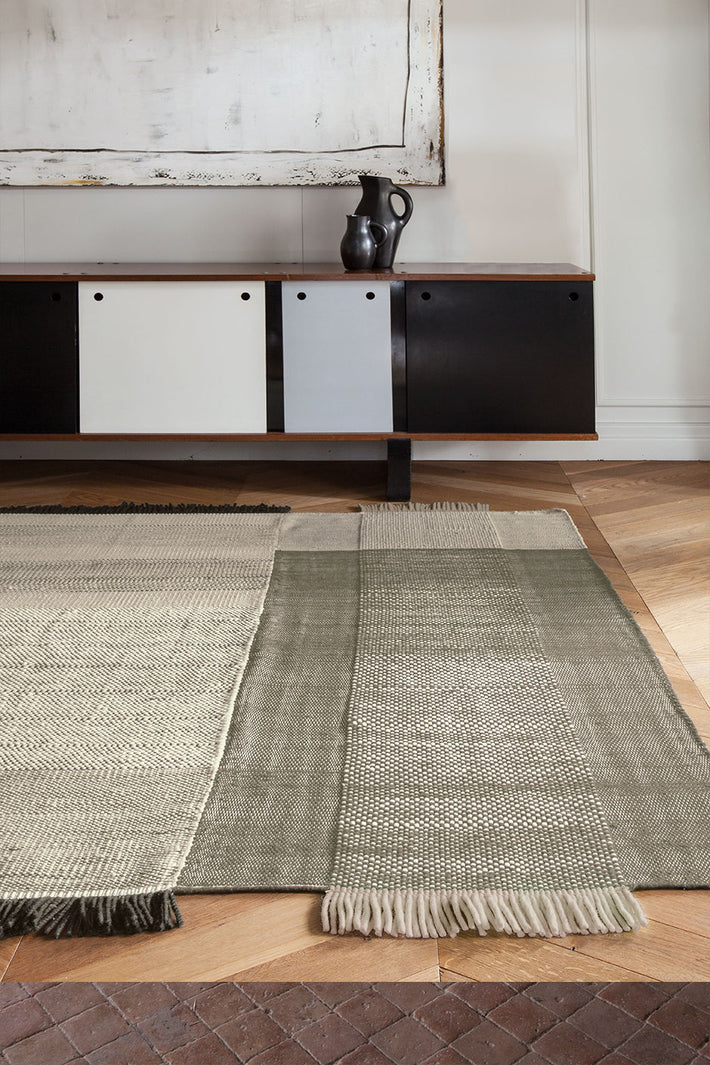
Cotton fibre develops from the hull of the cottonseed.
It has a resistance comparable to silk and has good thermal protection characteristics due to thehollow fiber structure. It is generally used in the warp of carpets.
Lyocell or Tencel ®
Artificial origin

Tencel® is the name given to the artificial cellulose fibre Lyocell. This biodegradable fibre is made from wood cellulose, mostly from eucalyptus, but also from pine, beech or spruce (PEFC).
It is considered a sustainable fibre as it does not require pesticides or artificial irrigation, it is more environmentally friendly than viscose, its production is not harmful to the environment or to people. It is a breathable, soft and cool fibre, perfect for indoor use.
Recycled PET
Synthetic origin
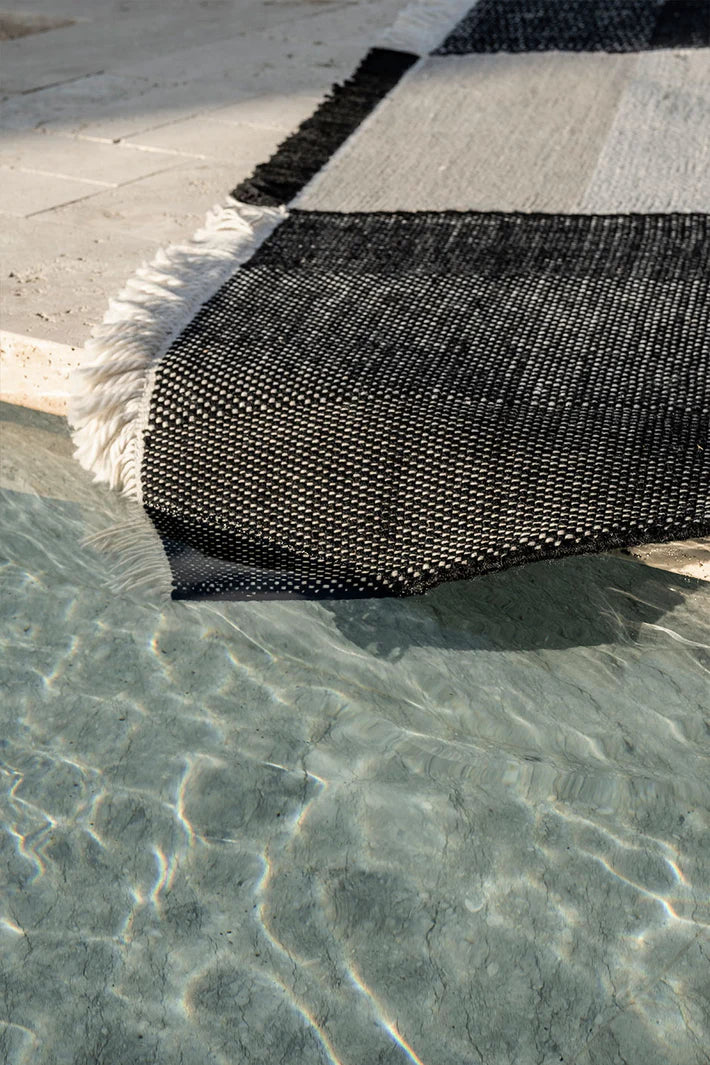
This fibre is produced through the process of recovering and reusing polyethylene waste such as plastic bottles to result in a light and flexible fibre, but at the same time with wear resistance and good thermal properties which at the same time withstands water and humidity well, making it an ideal fibre for outdoor use.
Recycled rubber
Synthetic origin
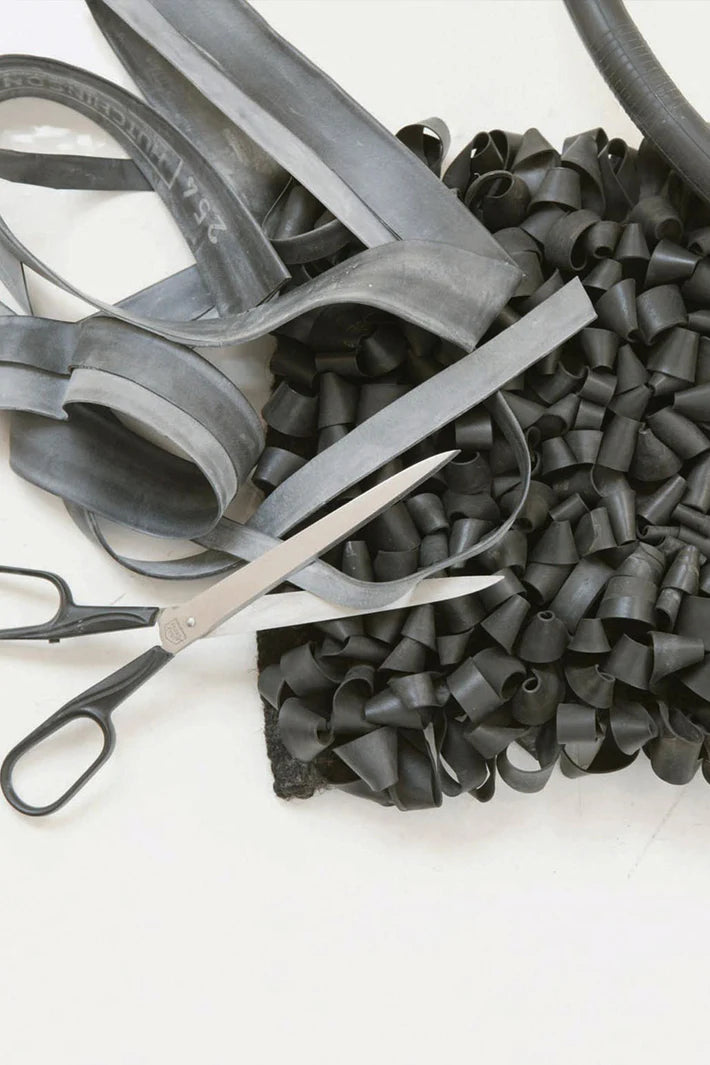
100% recycled rubber material in India, elastic and resistant.
It is water repellent, thermal and electrical insulator.
After all these years, nanimarquina main objective remains the same: reinventing the rug. And they do so by always combining tradition with design; envisioning sustainability from a practical point of view.
